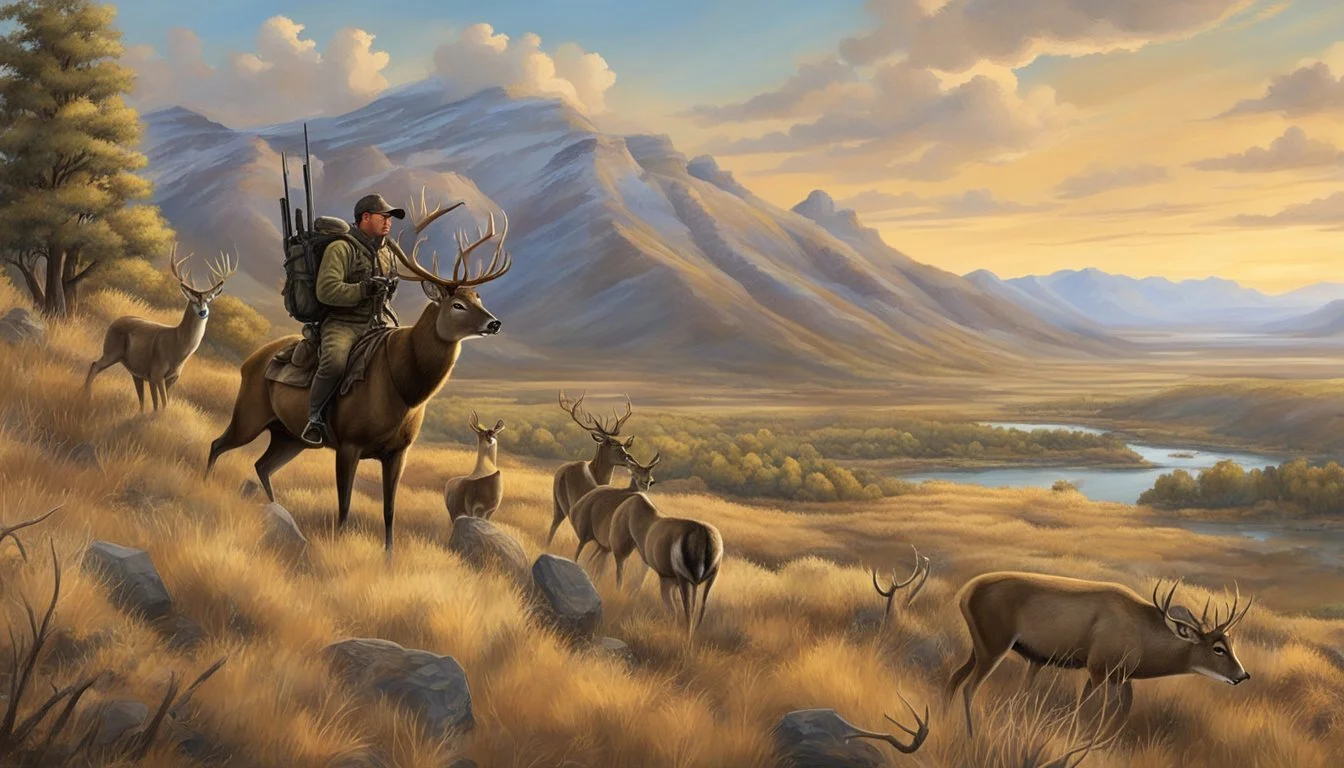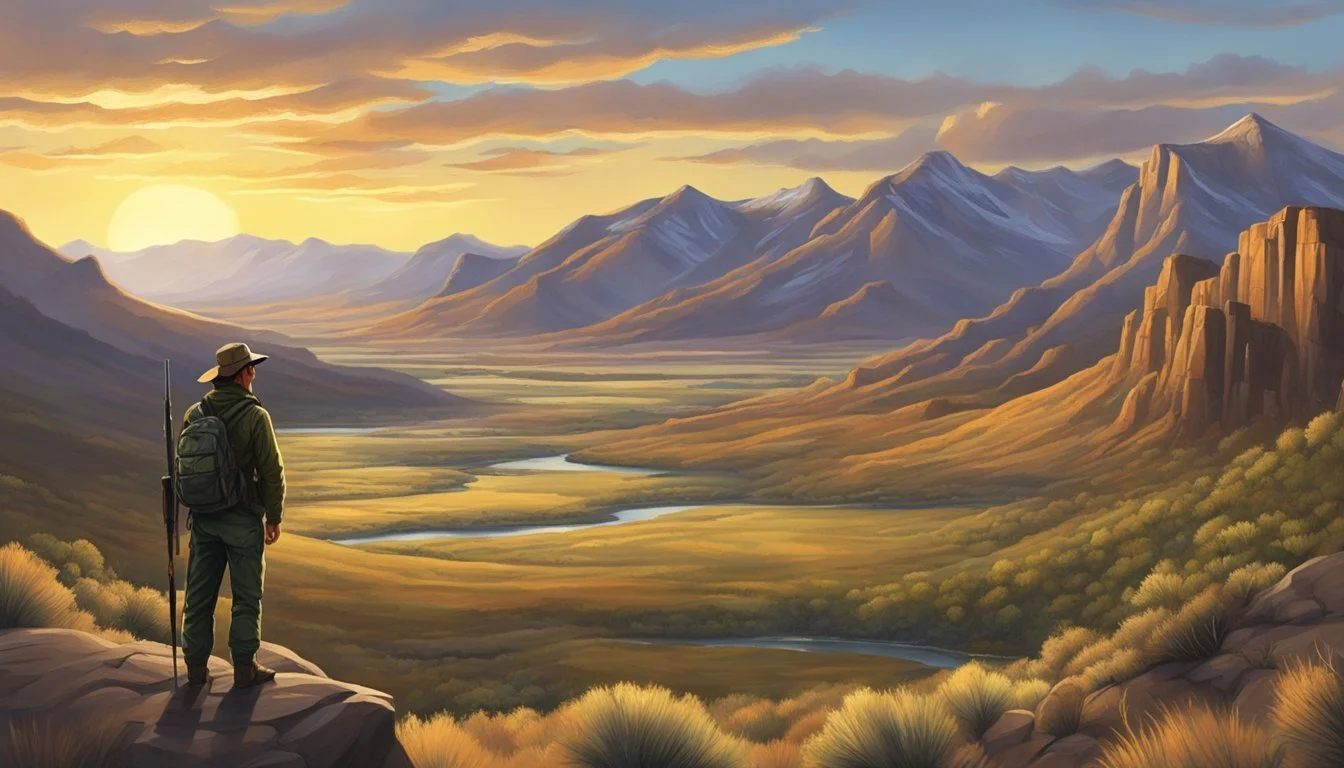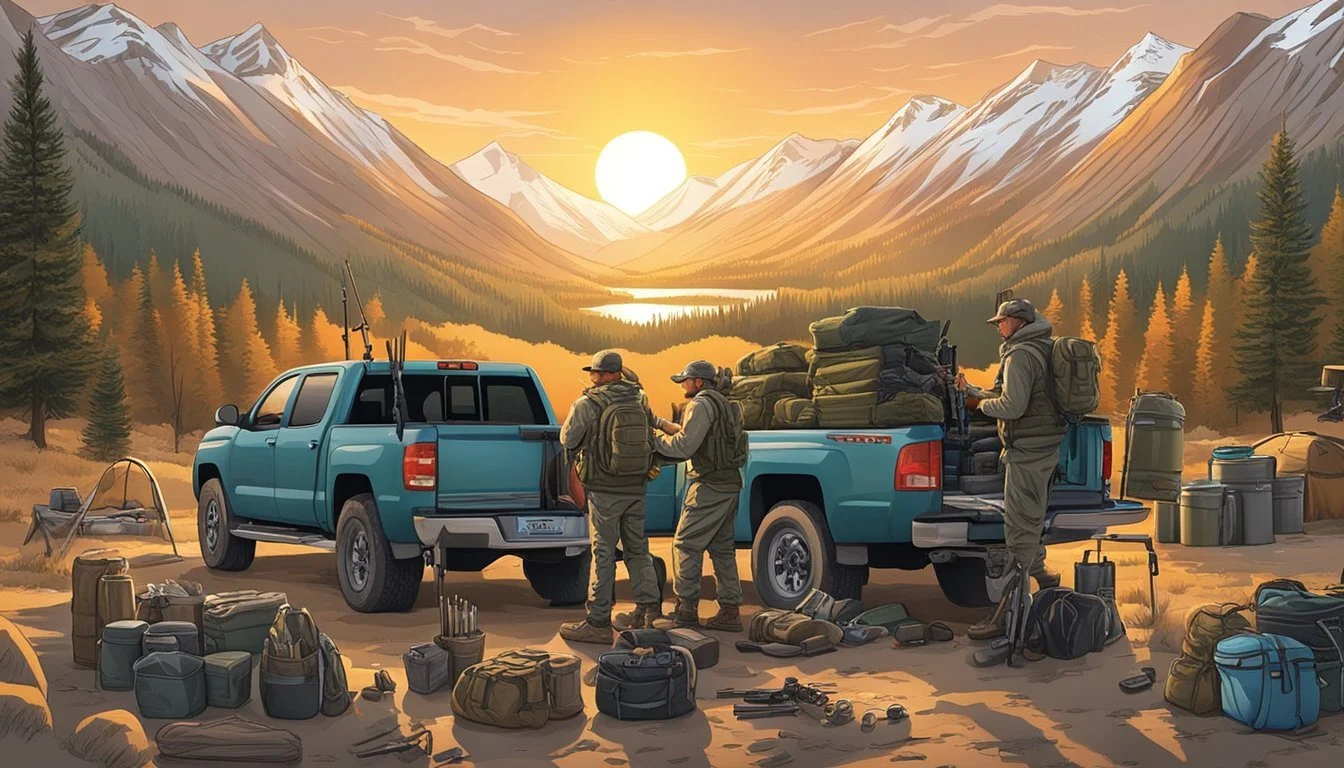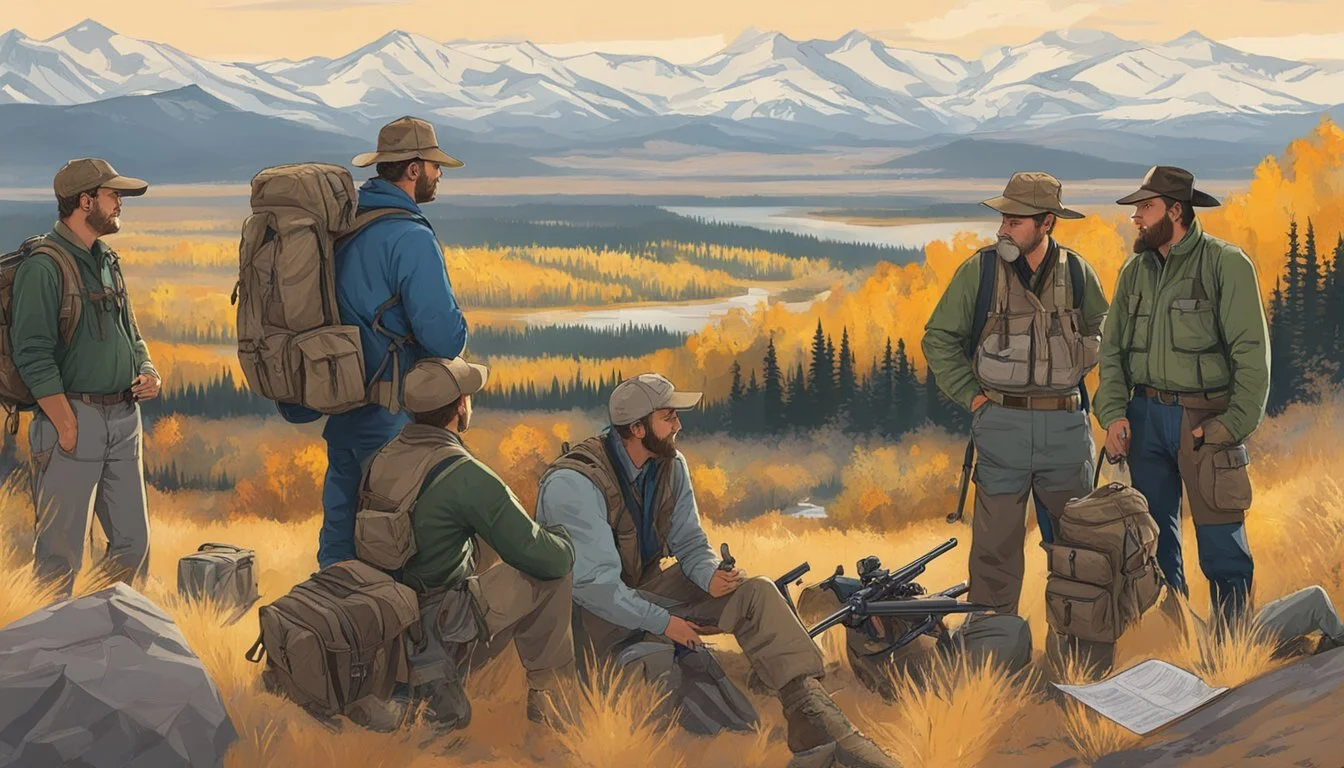Hunting Leases Utah
Your Guide to Accessing Prime Hunting Grounds
Utah offers a diverse range of wildlife, making it a prime destination for hunting enthusiasts. With landscapes that range from high mountain forests to lowland deserts, the state provides habitats for various game species. The state's hunting grounds are a mix of public and private lands, and hunters looking to secure a place for their sport often turn to hunting leases as a reliable option. These leases allow individuals or groups exclusive access to private lands for hunting at agreed-upon times, which can enhance the hunting experience by offering more seclusion and often better management of wildlife populations.
Private hunting leases in Utah may include large ranches, smaller cabins, and everything in between, catering to a range of hunting preferences and budgets. Species commonly hunted in Utah include Mule Deer, White-tailed Deer, Rocky Mountain Elk, Pronghorn, and Shiras Moose. The leasing process often involves direct communication with landowners, which can provide hunters with detailed information about the land and its game, ensuring a clear understanding of the hunting territory and expectations.
Hunting leases offer a form of wildlife management, where landowners can control the number of hunters and the harvest of animals, contributing to conservation efforts. In Utah, hunting regulations are strictly followed, and leases may include the expertise of biologists and ranch management to guide sustainable hunting practices. This ensures that hunting is not only an enjoyable activity but also one that respects and maintains Utah's ecosystems and biodiversity.
Understanding Hunting Leases in Utah
Hunting leases in Utah offer sportsmen the opportunity to access private lands with managed wildlife habitats. These agreements between landowners and hunters provide a unique chance for hunters to pursue game in less pressured environments.
Types of Leases
Short-term: Typically for a single season or specific period.
Long-term: Can extend for several years, providing consistent hunting opportunities.
Wildlife and Habitat
Utah is known for its diverse ecosystems, which support a variety of game species, including elk, moose, mule deer, and antelope. Leased lands often include prime habitats like the rugged terrain above the Wildcat Nature Reserve, which is frequented by elk and moose during the winter.
Features of Prime Leases
Acreage: Leases can range in size, with some properties like ranches offering extensive land.
Game Management: Landowners often implement strategies for wildlife management to ensure a sustainable hunting experience.
Access: Leasing provides controlled access, which can help maintain the quality of the hunting area.
Lease Costs
Costs can vary widely based on the property's size, location, and the type of game available. Hunters should expect a range of lease prices, reflecting the quality and potential of the hunting experience on offer.
Finding a Lease
Several online platforms are dedicated to connecting hunters with available leases in Utah, such as HLRBO and HuntingLocator.com, making it easier to find suitable options for the hunting season.
When considering a hunting lease, hunters should thoroughly research to understand the terms, wildlife populations, and habitat conditions. With due diligence, one can secure a productive and enjoyable hunting experience on the private ranches and lands of Utah.
Benefits of Hunting on Leased Land
Leasing land for hunting purposes in Utah offers distinct advantages, such as assured quality of game and enhanced wildlife conservation efforts.
Exclusive Access to Game
Leased lands provide hunters with exclusive access to the property, which significantly reduces competition from other hunters. This is particularly beneficial for those seeking big game species like mule deer, elk, and pronghorn. With fewer hunters on the land, the chances of encountering and harvesting high-quality trophy animals increase.
Wildlife Management and Conservation
Leased hunting lands allow for wildlife management practices that promote the health and proliferation of various species. Professional hunters and hunting ranches play a critical role in these conservation efforts, implementing strategies to ensure sustainable populations of game. Effective management on leased lands contributes to balanced ecosystems, which benefits not only the hunter but also the species residing on the property.
Regulations and Legal Considerations
Hunting in Utah is governed by a set of regulations designed to manage wildlife sustainably and ensure hunters' safety. Understanding these rules, as well as the specifics of lease agreements, is crucial for both resident and non-resident hunters.
State Hunting Regulations
Utah's hunting regulations are comprehensive, addressing various aspects such as hunting seasons, licensing, and wildlife management. Hunting licenses are mandatory, and the Utah Legislature stipulates that youth hunters must have a legal guardian present during the hunt, as per Utah Code § 23A-5-307. Season dates vary by game and sometimes by region, with additional guidelines for protected species.
Residents and non-residents need appropriate licenses, which are subject to fee changes that took place on July 1, 2023.
Conservation officers enforce regulations and have the authority to issue citations for non-compliance.
Lease Agreements
Lease agreements for hunting on private land in Utah must align with administrative rule R657-28. This rule regulates the use of Division lands and covers rights of way, leases, and special-use permits.
Lease agreements should include specifics such as permitted hunting seasons, types of game, and land use restrictions.
Landowners and lessees need to understand their rights and responsibilities under these legal documents to avoid potential disputes or legal issues.
By adhering to state regulations and solidifying clear lease agreements, hunters and landowners can ensure a lawful and ethical hunting experience in Utah.
Types of Hunts Available on Leases
Hunting leases in Utah provide an array of hunting experiences, catering specifically to different hunting preferences and wildlife species. The lease agreements often stipulate whether hunts are guided or unguided, and which species are available, including opportunities for trophy hunting.
Guided Versus Unguided Hunts
Utah hunting leases offer guided and unguided hunts. Guided hunts are led by experienced outfitters who assist hunters in tracking and harvesting game, while unguided hunts allow individuals to hunt independently on the leased land. The choice between guided and unguided hunts depends on the hunter's experience level and the type of hunting experience they seek.
Species-Specific Hunts
Leaseholders can engage in hunts targeting specific species. Utah is known for its trophy mule deer, bull elk, pronghorn antelope, Shiras moose, and Rocky Mountain elk among other species. In addition to big game, hunters can find leases offering waterfowl such as ducks and geese, as well as upland game like rabbits and pheasant. The availability of species-specific hunts is determined by the habitat and management practices of the lease area.
Trophy Hunts
For hunters pursuing prestigious game, Utah leases offer trophy hunts. These hunts are designed for harvesting animals with impressive physical characteristics, such as large antlers or horns. Trophy hunts are particularly popular for species like trophy mule deer and bull elk. Such hunts are often regulated to ensure sustainable wildlife populations and may be limited in availability to maintain the quality and size of the trophies.
Selecting the Right Hunting Lease
Choosing the right hunting lease in Utah requires attention to the lease's terrain and access conditions, as well as the types of game populations it supports. It is essential for the hunter to consider the lease's potential to provide a fruitful hunting experience.
Evaluating Terrain and Access
Whenever one is selecting a hunting lease, assessing the terrain is crucial. The mountains of Utah, particularly the Rocky Mountains, provide varied habitats suitable for different game species. Leases that offer a mix of dense forests, open meadows, and rugged hillsides often give hunters diverse opportunities. A lease should also grant reasonable access for vehicles or on foot to reach the best hunting spots without causing excessive disturbance to wildlife.
Access considerations include:
Roads or trails for vehicle entry
Paths for hiking to remote areas
Proximity to necessary amenities
Considering Game Populations
The quality of a hunting lease is significantly impacted by its game populations. When dealing with big game hunting leases, one should verify the presence of species like Rocky Mountain Elk, Mule Deer, and potentially, Shiras Moose. A professional outfitter can provide insights into deer hunting success rates and other relevant statistics that reflect lease quality.
Key considerations for game populations:
Evidence of healthy game trails and signs
Historical success rates of hunting on the property
Presence of food sources and water
Local regulations and game management practices
A hunter must also ensure that their chosen weapon matches the game they are pursuing, respecting both the challenge of the terrain and the species. Professional guidance can often alert them to any special considerations needed for the lease's environment and target game.
Seasonal Considerations for Hunting Leases
When planning hunting leases in Utah, one must consider the specific periods when different game species are most available and the types of hunting allowed. The state manages hunting by seasons to ensure sustainable wildlife populations and to offer diverse hunting experiences.
Best Times for Hunt Species
Archery Hunts: The archery season typically starts in late August and can extend through mid-September, offering opportunities to hunt species such as mule deer and elk. This timeframe is particularly crucial for those seeking a more challenging hunting method.
Muzzleloader Hunts: Muzzleloader enthusiasts often have their dedicated season, which usually falls in late September. This period is favored for its cooler temperatures and the beginnings of mating seasons for certain game, increasing hunter success rates.
General Rifle Seasons: These are traditionally set for late October through November, when the fall weather provides ideal conditions for hunting a range of species from elk to mule deer.
Seasonal Lease Availability
Private Lands: The availability of hunting leases on private lands can vary throughout the year, with peak demand often occurring during the general rifle seasons. Landowners may offer leases that are valid for one specific season, such as archery or muzzleloader, or they might provide annual leases that include all hunting seasons.
Public Lands: While hunting on public lands does not require leasing, certain units may have draw tags that limit the number of hunters during various seasons to prevent overharvesting. Hunters must stay informed about the Utah Division of Wildlife Resources' regulations and draw periods to plan their hunts accordingly.
Hunting Lease Amenities and Accommodations
Hunting leases in Utah offer a range of amenities and accommodations to enhance the outdoor experience. They typically provide various lodging options and recreational activities to ensure a comfortable and engaging stay for hunters and their companions.
Lodging Options
Lodging on hunting leases often includes a selection of rustic cabins, campgrounds, or even luxury fishing lodges. Hunters can expect features such as:
Cabins: Furnished with essentials, some may offer modern conveniences like electricity and running water.
Campgrounds: Equipped for tents or RVs, these may include basic facilities like restrooms and fire pits.
Fishing Lodges: For leases with fishing activities, lodges might provide amenities that cater to anglers, such as fly fishing shops or guided services.
Recreational Activities
Beyond hunting, leases may boast a variety of recreational activities. Key offerings might encompass:
Fishing: Many leases contain rivers or lakes known for abundant cutthroat trout, offering superb fly fishing opportunities.
Hiking and Horseback Riding: Leases often encompass vast land with trails ideal for exploring the natural beauty of Utah on foot or by horseback.
These accommodations and activities aim to create a well-rounded outdoor experience for visitors to Utah’s hunting leases.
Preparing for a Hunting Lease Trip
When embarking on a hunting lease trip in Utah, thorough preparation is crucial. This includes gathering essential gear and observing safety measures to ensure a successful and secure experience.
Essential Gear and Equipment
For any hunting trip on Utah's leased lands, which may cover up to 15,000 acres of terrain, the right equipment is paramount. Hunters need to pack:
Rifles or Shotguns: Depending on the targeted species, one should select a rifle or shotgun suitable for the game, such as elk or mule deer, ensuring it meets Utah's hunting regulations.
Trophies Quality Tools: High-quality skinning knives and proper tagging materials for trophies.
Navigation Aids: GPS units and maps are essential for large acreage navigation.
Communication Devices: A reliable two-way radio or a fully charged mobile phone with extra batteries.
Survival Kit: Basic first-aid supplies, fire-starting tools, and emergency shelters.
Miscellaneous: Appropriate attire for weather conditions, food, water, and a backpack to carry it all.
Safety Precautions
Safety on a hunting lease trip should never be compromised. The following precautions are vital:
Check Equipment: Before departure, all gear, especially firearms and safety ropes, should be inspected for proper function.
Inform Others: Leave trip details with a responsible third party and check in regularly.
Weather Awareness: Staying vigilant about the weather and preparing for sudden changes is essential.
Legal Compliance: Carry all necessary licenses, permits, and vouchers required by Utah law.
Firearm Safety: Always treat firearms as loaded and be sure of the target and beyond before shooting.
Wildlife Encounters: Understanding how to respond to an encounter with various big game species is crucial for safety.
Costs and Budgeting for Hunting Leases
In Utah, the financial considerations of hunting leases for big game must be handled with attention to detail. Landowners and hunters alike need to account for specific costs.
Lease Prices
Lease prices in Utah can vary significantly and are influenced by several factors including the size of the property, the quality of game, and accessibility. Prices can range from $1,000 to $5,000 or higher, depending on exclusivity and the type of game available. For example:
15,000-acre parcel in Emery County: Leasing rates may hover around the mentioned range, but the presence of professional hunting services on site can escalate the cost.
When configuring a budget for a hunting lease, it's important to note the hunting type—deer, pronghorn, elk—are considerations in pricing. Hunters should be prepared to pay top dollar for lands known for trophy-quality big game.
Additional Expenses
Additional costs must be factored into the overall budget, beyond the base lease rate. These may include:
Professional guide services: Essential for novice hunters or those unfamiliar with the Utah terrain.
Vehicle access: Costs for vehicles and fuel to traverse the leased land.
Maintenance fees: Sometimes, leases include maintenance or improvement costs to enhance the hunting environment.
Hunters and lessors need to discuss and agree on these expenses upfront for a transparent and fair financial arrangement.
The Impact of Hunting Leases on Local Economies
Hunting leases in Utah provide an important source of revenue for rural communities and contribute to the conservation of wildlife and habitats. They influence both tourism, employment opportunities, and financial support for habitat conservation efforts.
Tourism and Employment
In Northern Utah, hunting leases attract sportsmen and outdoor enthusiasts from various regions, resulting in increased tourism. This influx of visitors necessitates services such as:
Lodging: Hotels, campgrounds, and cabin rentals see a rise in occupancy rates.
Dining: Local restaurants and food suppliers experience higher demand.
Supplies: Hunting and outdoor stores benefit from the sale of gear and licenses.
Fuel: Gas stations report more sales due to travel to and from hunting sites.
Employment opportunities in these sectors often expand during hunting seasons to accommodate the increased activity. Job creation ranges from hospitality staff to wildlife management professionals working on habitat preservation.
Conservation Funding
Hunting leases in Utah play a critical role in generating revenue for wildlife and habitat conservation. Funds derived from lease agreements are used for:
Habitat Improvement: Ensuring suitable living conditions for local fauna.
Wildlife Management: Balancing species populations to maintain ecosystem health.
Research: Studying wildlife to inform sustainable practices.
Revenue from leases often supports state conservation programs, which reinvest in the local environment. This not only safeguards the biodiversity of Northern Utah but also enhances the quality of hunting experiences, thereby sustaining the leasing market.
Frequently Asked Questions
Navigating the intricacies of hunting leases in Utah involves understanding state regulations, licensing requirements, and available lands for lease.
Common Queries About Hunting Leases
Q: How does one obtain a hunting license in Utah?
A person must complete a Hunter Education course if they were born after Dec 31, 1965, and then purchase the appropriate license through the Utah Division of Wildlife Resources (DWR).
Q: What are the regulations surrounding hunting leases in Utah?
Regulations can vary based on the type of game, season dates, and specific areas. Hunters should consult the Utah Hunt Planner for the regulations pertinent to their lease area.
Q: Where can someone find land for lease in Utah for hunting?
Land for lease is often listed on websites like HLRBO, and properties can range from private ranches to extensive tracks of wilderness suitable for various types of game including elk, mule deer, and bears.
Q: What should hunters know about season dates and types of game in leased areas?
They should verify the season dates and types of game allowed in their specific leased area. This information is essential for planning a hunt that complies with Utah's wildlife management goals.
Q: Are there hunt drawings for leased lands in Utah?
Yes, for certain game and premium hunts, hunters must participate in a draw system managed by Utah DWR, which allocates permits for specific species and areas.
Hunters interested in leasing land for hunting in Utah should always stay informed of the current year's regulations and available leases to ensure a lawful and enjoyable experience.
Conclusion
Hunting leases in Utah offer hunters exclusive access to private lands, often resulting in enhanced hunting experiences. The presence of large game species such as elk and moose, combined with the state's majestic landscapes, positions Utah as a destination for hunting enthusiasts.
Benefits of Hunting Leases:
Controlled Access: Lessees enjoy a more private hunting experience with lower competition for prime spots.
Quality Game Management: Landowners often manage their property for wildlife conservation, leading to healthier game populations.
Economic Support: Leasing land for hunting supports local economies and incentivizes landowners to maintain natural habitats.
Utah's commitment to wildlife conservation aligns with the essence of hunting leases. The leasing process contributes to sustainable hunting practices, ensuring that both wildlife populations and their habitats are responsibly managed for future generations.
When selecting a hunting lease, hunters must consider diverse factors such as location, price, and the types of game available. Due diligence, including consulting with the Utah Division of Wildlife Resources for regulations and season dates, is imperative for a legal and ethical hunting experience.
Lessees are entrusted with the stewardship of the land during their lease term. Their engagement in ethical hunting practices underlies the continuation of Utah's rich hunting tradition and the stewardship of its natural resources.












